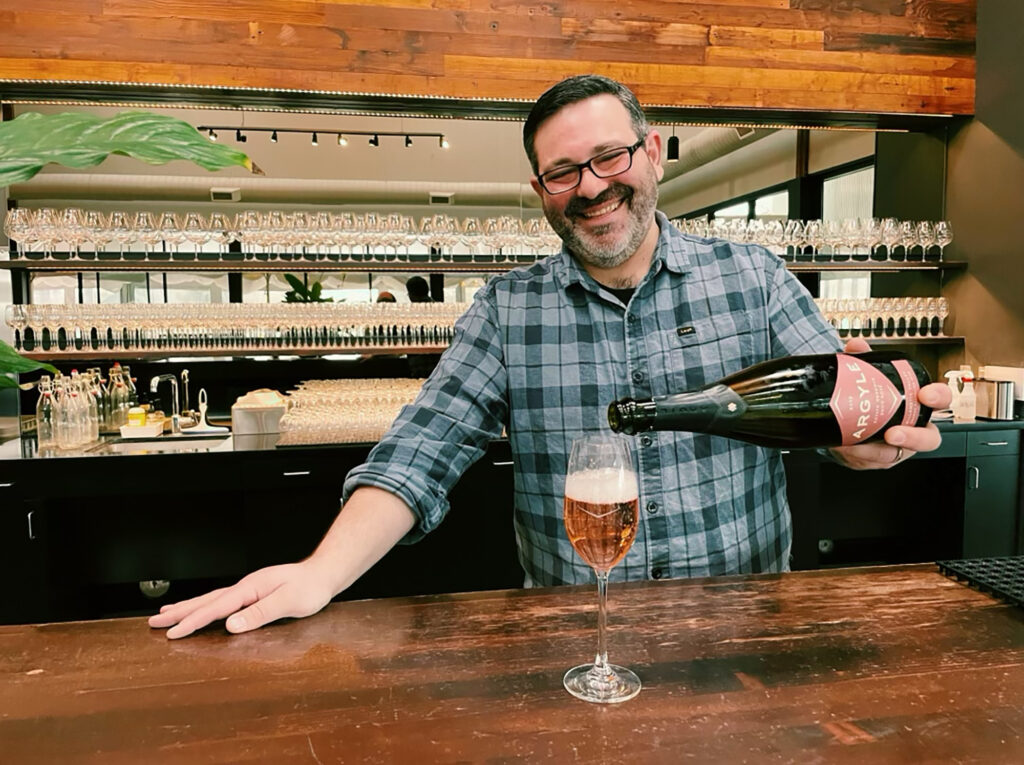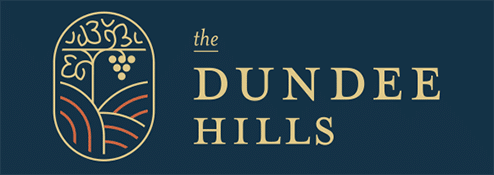Dundee Hills Sommelier Series: Wine & Truffles
If you’ve heard someone referred to as a “sommelier” and wondered what, exactly, the term means, you’re not alone. Is it a restaurant position? A certification someone can earn? A self-declared title? The truth, as it turns out, encompasses all these dimensions and more.
Joseph Cuvo, the Tasting House Supervisor at Argyle Winery, describes a sommelier as someone in a hospitality-focused position who specializes in beverages and engages directly with guests. A sommelier is trained to recommend beverages based on what a table has selected for their meal, to recommend adjacent wines to a suggested pairing, to offer knowledge and expertise of a wine’s origins, and educate the guest on how it will complement a dish.
Some sommeliers hold a Wine & Spirits Education Trust (WSET) certification. Some hold a certification from the Court of Master Sommeliers. And some are considered sommeliers because of significant self-study and time spent exploring wine across various regions. While sommeliers have varying preferences and will recommend wines differently from each other, there’s one thing they all hold in common: a true appreciation for and deep knowledge of wine.

Joseph, one of several sommeliers in the Dundee Hills holds a certification by the Court of Master Sommeliers and a WSET Level II certification. His adventures in hospitality began by creating memorable experiences through music, from classical to punk rock, before transitioning to create experiences for his guests in the culinary world. With a bachelor’s degree from the Culinary Institute of America and years of experience in top New York City restaurants like Del Posto, he’s an expert in pairing wine and eager to share the reasons behind his suggestions.
With Dundee’s Truffle Month festivities continuing into March, Joseph shared pairing ideas for one of his favorite ingredients.
First Course: Steak Tartare + Sparkling Wine
While Joseph adamantly believes sparkling, white and red wines all have a place with truffles, he always recommends starting a meal with bubbles. A steak tartare minimally garnished with preserved black truffles is visually stunning. As sparkling wines age the earthy flavor and aromas present themselves as white mushroom, toasted brioche, heavy cream or aged parmesan cheese depending on the specific wine and production method. While a Brut will complement the truffle because of shared earthy flavor notes, a Rosé will contrast.
- Wine Characteristics: Fruit-forward with some earthy funk and a creamy complexity. Medium-body with bright acidity and fresh aromas.
Second Course: Pasta + Pinot Noir
Joseph is quick to remind that black truffles are more forgiving than white: You can heat them up a bit while a white truffle will lose its flavor the second it hits heat. He recommends keeping this dish simple with a wider style noodle like pappardelle in a white truffle butter. He suggests leaving a stick of butter at room temperature, grating a white truffle over top, salting, emulsifying and then serving.
- Wine Characteristics: An older Pinot Noir vintage that’s fruit-forward and food friendly. A lighter style with brighter acidity and smoky undertones.
Main Course: Meat + Pinot Noir
Joseph declares nothing more spectacular than pulling a steak straight out of the oven and slathering a generous portion of truffle butter directly on top. Alternatively a roasted duck breast accompanied by black truffles and jus would be equally delicious. Gamey foods, like the duck breast, love a fruit-forward wine, which you’ll often find in a vintage that’s a little youthful. In both cases, he’d recommend a bigger Pinot Noir and from the Dundee Hills, the 2018 or 2019 vintages offer a good starting point for pairings.
- Wine Characteristics for a Steak Pairing: Jammy Pinot Noirs with higher tannins, good acidity, and great density.
- Wine characteristics for a Duck Breast Pairing: Acid-driven Pinot Noirs that are fruit forward, delicate, floral and lighter bodied.
Dessert: Cheese + Blanc de Blanc
Last, but certainly not least, Joseph recommends a brie-style cheese like Briar Rose Butterbloom, brought to room temperature with wild honey and white truffles over top. An extended tirage sparkling wine is the perfect way to conclude your menu. A wine of this caliber is a treat any day thanks to the decade it spends aging on the lees and the nuanced flavors that emerge as a result. The contrast with the truffle and the richness of the buttery cheese would be an absolute home run.
- Wine Characteristics: An extended tirage sparkling wine with a creamy mouthfeel to complement the cheese. Look for honey and beeswax notes along with mushroom and earthy undertones.
Truffle Month in Dundee Hills is a wonderful time to appreciate the region’s exceptional wines, and with these thoughtful recommendations from a local sommelier, Joseph Cuvo, you’re on your way to exciting culinary adventures!
+++++
Joseph Cuvo’s Dundee Hills Suggested Pairings:
- First Course:
- Argyle 2016 Knudsen Vineyard Brut: This wine has a great balance of white mushroom and cheese rind. It’s mostly Pinot Noir, so there is red apple and dark cherry fruit in the mix, and because of that it has the balance of “fruit” and “funk”. The acidity is vibrant and presents itself in a way that it makes the secondary flavors and aromas seem fresher and more youthful than one might think.
- Argyle 2019 Estate Reserve Brut Rosé: The pink hue of this wine would be gorgeous next to the red steak. The youth of the 2019 Rosé makes it very fruit forward with grapefruit and cranberry. It is the current release of the wine and at the present time, does not show much earthy character, making it the treble to the bass of the truffles.
- Second Course:
- Dusky Goose 2013 Dundee Hills Pinot Noir: This wine is aged in 20% new oak, 58% neutral oak and 22% first past (barrels that have only been used once). Joseph describes this as a lighter style of Pinot with flavors of desiccated cherries and berries. While there is some oak, it’s a hint rather than a defining feature of the wine. 2013 was a unique growing year in the Dundee Hills with both cool and warm growing conditions that blended into an unforgettable vintage.
- Main Course:
- Argyle 2018 Spirit House Pinot Noir: Rather than the typical fruit notes of most Pinots, this vintage has flavors of iron and blackberry. It comes from the Knudsen vineyard and would be wonderful alongside a steak. 2018 was a hot structured vintage, big tannins and higher acidity.
- 2019 Domaine Drouhin Oregon (DDO) Lauréne: This wine came from a cooler vintage with bright acidity and it has ripe, fresh fruit flavors like cherries and cranberries, though it still feels dense and rich on the palate. The 2019 vintage is energetic with lively acidity across the board. It features lower sugars and a lower alcohol content, resulting from the cool harvest.
- Dessert:
- Argyle 2011 Blanc de Blanc: An extended tirage sparkling wine spends ten years aging with the lees, so you get richer development of the mushroom, brioche and creamy notes present in most sparkling wines. Since this wine is all Chardonnay, it will show more honey and beeswax notes. The lactic quality is present and shows a lemon curd or lemon cream pie quality, making it an automatic compliment to a cheese course or a cream-based dessert. This pairing will show the similarities like the creaminess of the wine and the cheese as well as the earthy quality in both the wine and the truffle.
- For those preferring Pinot Noir, Joseph would return to Dusky Goose’s 2013 vintage. The lighter style would play beautifully with dessert.
Truffle-Focused Recipes + Stories from the Dundee Hills
- Recipe: Truffled Marsala Mushrooms from Tina’s Restaurant
- Recipe: Truffle Arancini from Domaine Drouhin Oregon
- Story: Wooden Heart Pizza Opens in Dundee
